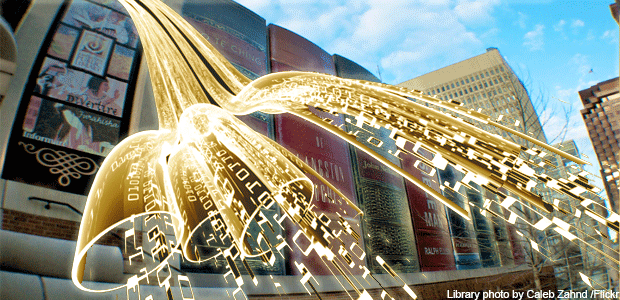Public libraries and government innovation

Steve Kelman notes an example of government reinvention at the very local level.

My latest blog last week was called What ever happened to innovation in government? The reaction I got online was mixed, some disputed the idea that innovation in government was decreasing. I wrote the blog more with sorrow than with gloating. As blog readers know, I love to see innovation in government, and nobody wants it to thrive more than I.
So I felt good when I saw, coming right on the blog post, an article by Liz McCormick, a summer urban fellow at the New Urban Mechanics, which is a self-described Civic R&D Lab in the Office of the Mayor in Boston working on management innovations for the city.The article, called “The Radical Potential of Libraries,” is about new ways to use libraries in the wake of the pandemic.
As I read the article, I thought about the opening vignette in my colleague Mark Moore’s public management classic Creating Public Value, about the librarian in his home town of Belmont, Mass., outside Boston. (Belmont, incidentally, is also the home of Mitt Romney). The story is about how teenage “latchkey children” started coming to the library after school and using it as a place to hang out, and making noise. This was against library rules prescribing quiet and the traditional use of libraries as places for study and research. However, the librarian realized that the teens congregating was not just a problem but an opportunity. If some dedicated, separated place were set up for them, this would establish a safe haven for them that would delight the parents. And if the kids continued to come, they would reveal by their behavior that they preferred it to other places to be. The librarian saw the library’s mission not just in its traditional conception, but asked if there were new ways it could create public value. Through innovation, the value libraries deliver went up dramatically.
Moore was recounting a fable, but gradually innovations along these lines actually came to libraries. Today, McCormick writes, “Residents depend on libraries for everything from computer and internet access, to language and legal support, a place to bring kids for storytimes, and a teen center after school.”
This was not the first time libraries took on a new role. McCormick notes that libraries have, since the industrial revolution, served as an entry point for newly arrived immigrants to learn, engage and get support pursuing citizenship.
What will happen after the libraries reopen in a safer, more vaccinated world? (Massachusetts has one of the highest vaccination rates in the U.S.) This summer the Boston Public Libraries and the city’s environmental department are “experimenting with two overlapping ideas,” McCormick writes: “How could libraries evolve to be remote work zones and serve a critical role in heat resilience as Boston gets hotter?”
The library system has rolled out free outdoor WiFi zones at 14 locations while branches have been closed, providing safe open-air internet access. The libraries created six shaded pop-up work areas to make the free WiFi easier to access and more fun to use. They have set up picnic tables, outdoor café space, and misting tents outside libraries as well, some of which have now been set up as locations to apply for rental relief.
“Even as physical records give way to a digital world,” the article concludes, “the role of libraries is more important than ever.”
Why has so much innovation emerged over time in public libraries, while some other organizations in government are stuck with what they’ve always done? The short answer is, I don’t know for sure. My speculation is that the general lack of political controversy around public libraries has helped. One view of government innovation is that it is spurred only by crisis and threats. Innovation in public libraries suggests a different story -- that more organizational security provides space for innovators to approach change with confidence and self-assurance.
NEXT STORY: FCW Insider: Aug. 2, 2021





